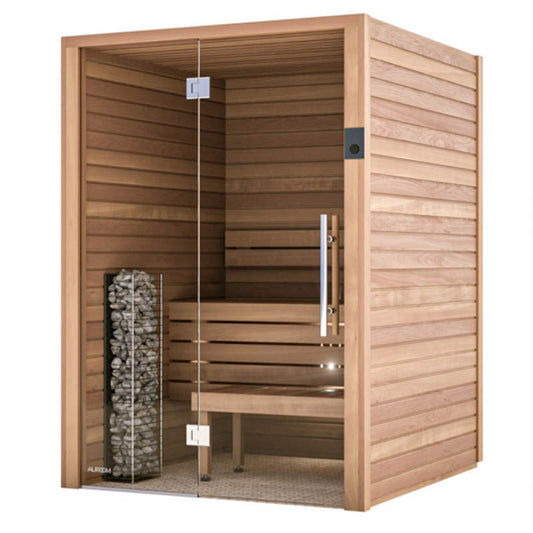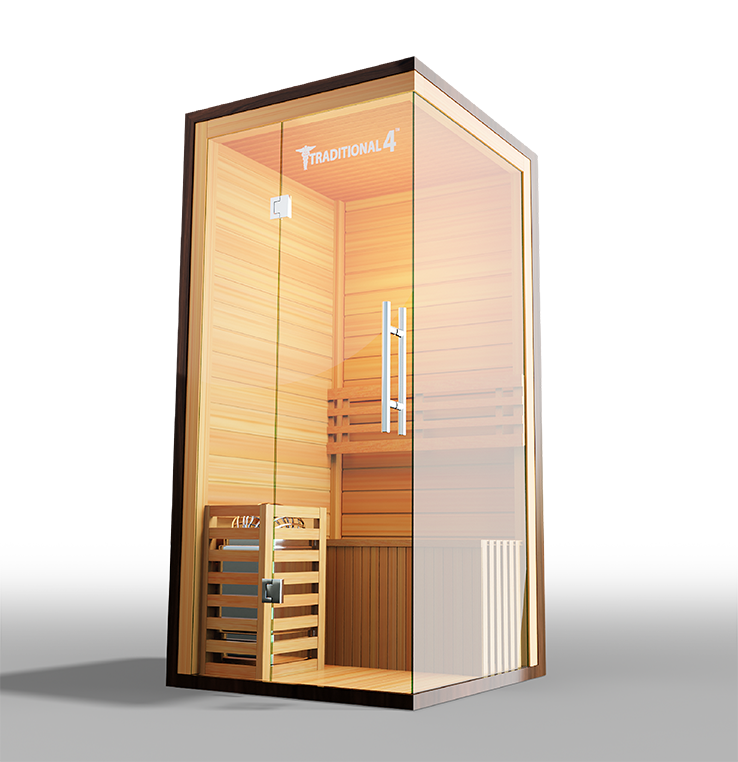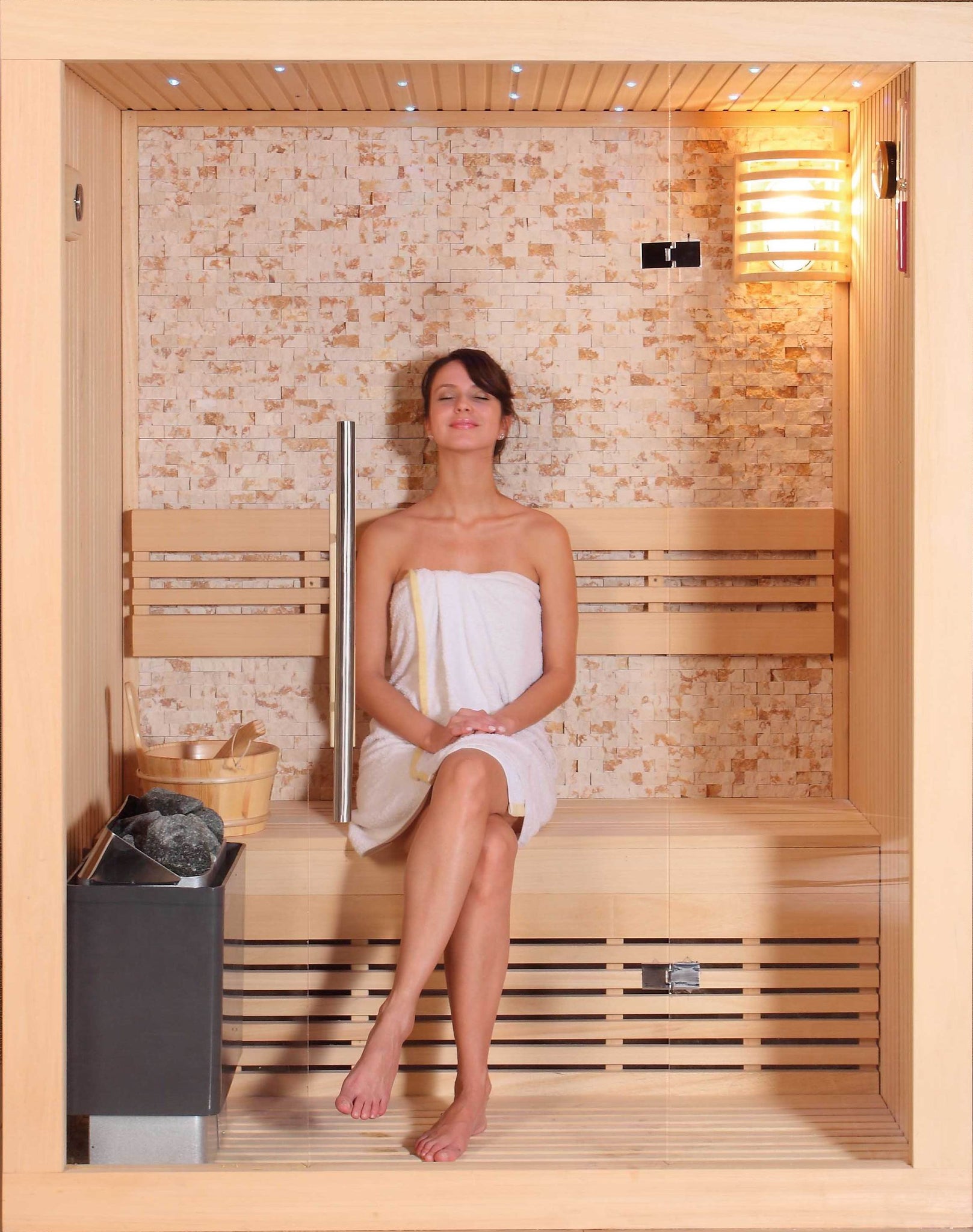The Best Strategy To Use For Traditional Sauna
The Best Strategy To Use For Traditional Sauna
Blog Article
The Basic Principles Of Traditional Sauna
Table of ContentsThe 30-Second Trick For Traditional SaunaThe Only Guide to Traditional Sauna7 Simple Techniques For Traditional SaunaGetting The Traditional Sauna To WorkThe 7-Minute Rule for Traditional Sauna
Most of the weight lost in a sauna is water loss and is re-gained upon rehydrating. Without a doubt sauna can be a crucial component of a healthy weight loss program. To consider the differences between traditional and IR saunas, I will separate these right into proven, academic, and produced distinctions.Therefore, the best point in the saunawhich goes to the ceiling directly above the sauna heateris commonly between 185 and 190 F. Claims that a traditional sauna surpasses 200 F is merely not real and not relevant for electrical saunas marketed in the US. The temperature level for a far-infrared sauna is generally established in between 120 and 140 F; nevertheless, unlike the standard sauna, the goal in and IR room is not to accomplish a high temperature.

When a traditional sauna has actually been effectively heated up, the sauna wall surfaces are warm, the air temperature level has achieved set temperature and the rocks are incredibly heated. As a fascinating side note, the warmed walls and the rocks are releasing far-infrared heat, integrated with the warmed air, to develop an "wrapping up heat".
A Biased View of Traditional Sauna
When the heat is attained, the aspects cycle on and off to preserve the high temperature. The majority of standard sauna users delight in pouring water over the rocks to develop heavy steam to elevate sauna moisture levels. The advantages of putting water over the rocks include: making the area a lot more comfortable, moistening the nasal passages, and permitting the usage of aromatherapy by mixing essential oils with the water.

When the power goes into the body, it triggers the body temperature level to increase and inevitably causes sweating. In an infrared sauna it is very important for the emitters/heaters to continue to be on virtually continuously. Considering that there is no mass of rocks to preserve warm, the sauna will cool if the emitters turned off.
The Main Principles Of Traditional Sauna
As discussed above, the sauna bather in an infrared area wants to position himself in front of operating emitters to More Help get maximum gain from the warmth. The home heating time for the two areas can be very different, depending upon how the areas are used. For a typical sauna, a bather needs to enable 30-40 minutes for the room to achieve a preferred temperature level and to effectively pre-heat the rocks.

A well constructed sauna will usually attain a temperature of 150-160 F in regarding 30-40 minutes. For hotter temperature levels, the space may require to warm for a longer duration.
To some, 15 minutes was "wasted" while the infrared power heated up the wood panels instead of warming a body, while others locate a pre-heated room to be more comfy and believe an elevated starting temperature is needed to begin sweating. The size of recommended usage for each and every space is roughly the same (10-15 mins per session); however, as a result of the reduced air temperatures and the capacity to really feel the impacts of infrared heat faster than a typical sauna, it is not unusual for a person to invest a total amount of 20-30 minutes in an infrared sauna.
10 Simple Techniques For Traditional Sauna

The typical expense per kWH of electrical power in the united state is about $0.11, so a 4.5 kW heater will set you back roughly $.50 to run for one hour, if the heating unit runs constantly for one hour. Generally a sauna heater will run for 75% of the initial hour and 50% of succeeding hours on considering that the components cycle once the established temperature is attained.
A 2 person far-infrared area is usually physically smaller than a typical sauna, often regarding 4' x 4' or smaller. The IR official source heater is typically 1.5-1.7 kW making use of a 120 volt 15 amp plug-in service. Given that the space can be utilized quicker than a sauna area, we will certainly assume the room is used for to look at more info of an hour consisting of warm up time.
There is a hardly ever talked about difference in the social experience between the two spaces. While our culture has shed several of the social benefit of the typical sauna experience, it can be really socially rewarding (Traditional Sauna). From family members time in the sauna, to heart-felt conversations with better halves, to sauna partiesthe traditional sauna experience can lead to intimate interacting socially
All about Traditional Sauna
A lot of higher end infrared rooms consist of tinted light treatment, audio systems and full-glass fronts.
Report this page